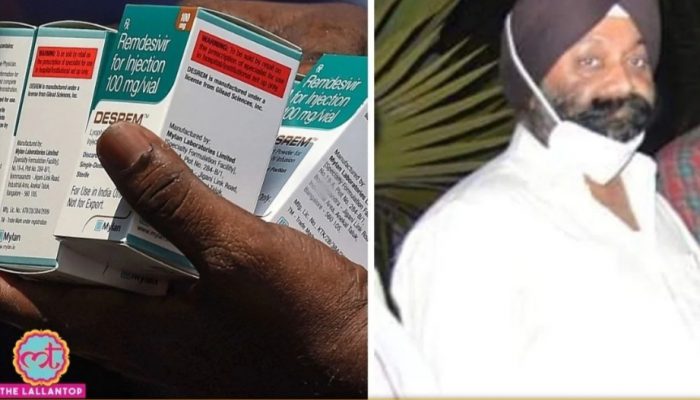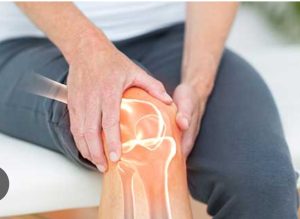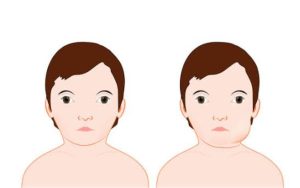REMDESIVIR
Remdesivir may be considered for fever (>38 C) at day 7 as 27.8% of patients with persistent fever develop hypoxia with 11.1% requiring intensive care1. Remdesivir otherwise is not considered to be effective in non-hypoxic patients2 and 5 days of treatment is no worse than 10 days3. The main beneficial effect is a reduction in the duration of symptoms4 and though there is a signal of improved mortality this has not been statistically significant. A systematic review and guidelines are available from the ACP5,6. These suggest a 5 day course in hypoxic hospitalised patients not on invasive ventilation less than 10 days from onset of illness. If the patient deteriorates and is intubated while on Remdesivir extending the course to 10 days may be useful. The NIH7 and IDSA8 guidelines are similar. On the contrary the WHO – Solidarity trial9 showed no benefit from Remdesivir and consequently the WHO guidelines10 do not recommend Remdesivir.
DEXAMETHASONE
Dexamethasone 6 mg IV improves mortality when started in patients requiring oxygen or higher levels of respiratory support as conclusively shown in the Recovery – dexamethasone trial11 and confirmed by a WHO sponsored meta-analysis12.The level of SpO2 at which Dexamethasone should be started is unclear – IDSA guidelines8 say <94% while the WHO13 guidelines state <90%. The NIH guidelines14 do not specify a SpO2 level. We recommend starting Dexamethasone when resting SpO2 is persistently <94%.
There is a signal for harm if patients without hypoxia are treated with steroids11 and as such this is discouraged by all guidelines8,13,14.
In Covid – ARDS patients with PaO2/FiO2 < 200 Dexamethasone 20mg daily for 5 days and 10mg daily for 5 days maybe used as in the successful CoDEX trial in Covid patients15 which was based on the dosage showing mortality benefit in the non-covid Dexa-ARDS trial16. Roughly any patient requiring more than 6 LPM nasal oxygen to keep Spo2 90% should be considered for the higher dose Dexamethasone strategy.
The duration of treatment for both low and high dose Dexamethasone is not more than 10 days with no need for tailing off. If a patient moves from low to high dose Dexamethasone because of deterioration the total number of days of Dexamethasone treatment may be more than 10.
TOCILIZUMAB
The Recovery trial17 and REMAP-CAP18 trials have confirmed mortality benefit from administration of Tocilizumab. Lower levels of success have been demonstrated in the EMPACTA trial with improvement in a composite outcome but not mortality19. The CORIMUNO-1920, COVACTA21, BACC-BAY22, the Coalition covid-19 Brazil VI Investigators23 and theRCT-TCZ-COVID-19 trial24 did not show any benefit. There is strong evidence from these trials that Tocilizumab does not work without concomitant steroids or during established invasive ventilation . All these RCTs have been reviewed by the NIH25, NICE26 and IDSA8 guidelines groups and all groups have given recommendations in favour of Tocilizumab in all patients with raised inflammatory markers and within 24-48 hours of requiring HFNC, NIV/CPAP or invasive ventilation. The IDSA and NICE in addition recommend it in progressively hypoxic patients even on conventional oxygen while the NIH agree that some patients in the conventional oxygen group probably benefit from it but is not sure how those patients should be selected. None of the trials used IL6 to target treatment. The WHO is in the process of reviewing the literature on Tocilizumab with a metanalysis27 and have not made any recommendation at this time. A separate metanalysis28 of all the above trials has confirmed a mortality benefit.
Patients with rising CRP, IL6 and low or stable Procalcitonin with progressive hypoxia despite steroid use should be considered for Tocilizumab. Values of CRP>100 or IL6 >80 and Procalcitonin <1 should be viewed with particular concern.
- We have however personally seen patients with IL6 >80 who were not hypoxic and who improved without any intervention and decreased their IL6 to <10 in 48 hours.
- Our inclusion of Procalcitonin levels in our calculations is based on the fact that it is usually less than 1.1 in “pure” covid29. If Procalcitonin is raised we focus our attention on bacterial coinfection and avoid Tocilizumab..
- 400 mg (8mg/kg) single dose once has been most used, with occasional use of a second dose within 24 hours.
- Repeat testing of IL6 levels are not useful after using Tocilizumb as it can increase IL6 levels for weeks.
- Significant liver disease is a contraindication to its use.
ANTICOAGULATION
Standard dose prophylaxis is indicated in all hospitalised patients as it reduces mortality30. The INSPIRATION RCT conclusively shows that intermediate dose prophylaxis is of no benefit in any patient group31. The preliminary report of the ATTACC/REMAP-CAP/ACTIV4A32 RCT in critically ill covid patients (defined as the requirement for organ support with high flow nasal cannula, non-invasive ventilation, invasive ventilation, vasopressors, or inotropes) suggests that full anticoagulation increases mortality in these patients. A similar finding was seen in the large STOP-COVID database review33. In view of this, empirical full anticoagulation in the critically ill patient is to be avoided except in proven or strongly suspected VTE. The preliminary report of the same group of full anticoagulation in moderately ill covid patients – as yet unpublished in any form –has been discussed in two reviews34,35 and there is cautious optimism that it improves outcome. The interim results are available on the internet36. Interestingly D-Dimer levels have no bearing on outcomes regarding anticoagulation in this study. Post discharge DVTs are no more than similar non-covid patient series37–39 and post discharge thromboprophylaxis is unlikely to be beneficial. The ACCP guidelines40 concur with standard thromboprophylaxis, no benefit to intermediate dose thromboprophylaxis or D-Dimer stratified thromboprophylaxis and no extended thromboprophylaxis post discharge.
All patients with Spo2 persistently less than 94% receive
- 5 days of IV Remdesivir (within day 10 of symptom onset)
- 10 days of 6 mg Dexamethasone IV/oral (usually after day 7 of symptom onset)
- 40 mg of Enoxaparin s/c daily
- Consider Tocilizumab in progressively hypoxic patients despite steroids guided by Procalcitonin /IL6/CRP levels
In patients requiring >6LPMNC to maintain SpO2 90%
- Consider 20 mg Dexamethasone for 5 days then 10 mg Dexamethasone for 5 days
- Consider Tocilizumab(within 48 hours of starting NIV/CPAP/HFNC/Invasive ventilation )
- D-Dimer stratification, Intermediate dose or post discharge thromboprophylaxis is not recommended
- Full dose anticoagulation for critically ill patients (in the absence of proven or strongly suspected VTE) is not recommended
- Remdesivir is not recommended on patients established on mechanical ventilation but maybe considered for patients with persistent fever at day 7
- Seek expert opinion re full anticoagulation in moderately hypoxic patients
- Ng DHL, Choy CY, Chan Y-H, et al. Fever Patterns, Cytokine Profiles, and Outcomes in COVID-19. Open Forum Infect Dis. 2020;7(9). doi:10.1093/ofid/ofaa375
- Spinner CD, Gottlieb RL, Criner GJ, et al. Effect of Remdesivir vs Standard Care on Clinical Status at 11 Days in Patients With Moderate COVID-19. JAMA. 2020;324(11):1048. doi:10.1001/jama.2020.16349
- Goldman JD, Lye DCB, Hui DS, et al. Remdesivir for 5 or 10 Days in Patients with Severe Covid-19. N Engl J Med. 2020;383(19):1827-1837. doi:10.1056/nejmoa2015301
- Beigel JH, Tomashek KM, Dodd LE, et al. Remdesivir for the Treatment of Covid-19 — Final Report. N Engl J Med. 2020;383(19):1813-1826. doi:10.1056/nejmoa2007764
- Kaka AS, MacDonald R, Greer N, et al. Major Update: Remdesivir for Adults With COVID-19. Ann Intern Med. February 2021:M20-8148. doi:10.7326/m20-8148
- Qaseem A, Yost J, Etxeandia-Ikobaltzeta I, et al. Should Remdesivir Be Used for the Treatment of Patients With COVID-19? Rapid, Living Practice Points From the American College of Physicians (Version 2). Ann Intern Med. February 2021:M20-8101. doi:10.7326/M20-8101
- NIH. Remdesivir | COVID-19 Treatment Guidelines. https://www.covid19treatmentguidelines.nih.gov/antiviral-therapy/remdesivir/. Accessed April 16, 2021.
- Adarsh Bhimraj A, Morgan RL, Hirsch Shumaker A, et al. Infectious Diseases Society of America Guidelines on the Treatment and Management of Patients with COVID-19. www.idsociety.org/COVID19guidelines. Accessed April 14, 2021.
- Pan H, Peto R, Karim QA, et al. Repurposed antiviral drugs for COVID-19 –interim WHO SOLIDARITY trial results. medRxiv. October 2020:2020.10.15.20209817. doi:10.1101/2020.10.15.20209817
- WHO. Therapeutics and COVID-19: living guideline. https://www.who.int/publications/i/item/WHO-2019-nCoV-therapeutics-2021.1. Accessed April 14, 2021.
- Peter Horby, F.R.C.P., Wei Shen Lim, F.R.C.P., Jonathan R. Emberson, Ph.D., Marion Mafham, M.D., Jennifer L. Bell, M.Sc., Louise Linsell, D.Phil., Natalie Staplin, Ph.D., Christopher Brightling, F.Med.Sci., Andrew Ustianowski, Ph.D., Einas Elmahi, M.Phil FRCP. Dexamethasone in Hospitalized Patients with Covid-19. N Engl J Med. 2021;384(8):693-704. doi:10.1056/NEJMoa2021436
- Sterne JAC, Murthy S, Diaz J V., et al. Association Between Administration of Systemic Corticosteroids and Mortality Among Critically Ill Patients With COVID-19. JAMA. 2020;324(13):1330. doi:10.1001/jama.2020.17023
- WHO. Corticosteroids for COVID-19. https://www.who.int/publications/i/item/WHO-2019-nCoV-Corticosteroids-2020.1. Accessed April 14, 2021.
- NIH. Corticosteroids | COVID-19 Treatment Guidelines. https://www.covid19treatmentguidelines.nih.gov/immunomodulators/corticosteroids/. Accessed April 16, 2021.
- Tomazini BM, Maia IS, Cavalcanti AB, et al. Effect of Dexamethasone on Days Alive and Ventilator-Free in Patients With Moderate or Severe Acute Respiratory Distress Syndrome and COVID-19. JAMA. 2020;324(13):1307. doi:10.1001/jama.2020.17021
- Villar J, Ferrando C, Martínez D, et al. Dexamethasone treatment for the acute respiratory distress syndrome: a multicentre, randomised controlled trial. Lancet Respir Med. 2020;8(3):267-276. doi:10.1016/S2213-2600(19)30417-5
- Landray M. Tocilizumab in patients admitted to hospital with COVID-19 (RECOVERY): preliminary results of a randomised, controlled, open-label, platform trial. medRxiv. February 2021:2021.02.11.21249258. doi:10.1101/2021.02.11.21249258
- The REMAP-CAP investigators. Interleukin-6 Receptor Antagonists in Critically Ill Patients with Covid-19. N Engl J Med. February 2021:NEJMoa2100433. doi:10.1056/NEJMoa2100433
- Salama C, Han J, Yau L, et al. Tocilizumab in Patients Hospitalized with Covid-19 Pneumonia. N Engl J Med. 2021;384(1):20-30. doi:10.1056/NEJMoa2030340
- Hermine O, Mariette X, Tharaux PL, Resche-Rigon M, Porcher R, Ravaud P. Effect of Tocilizumab vs Usual Care in Adults Hospitalized with COVID-19 and Moderate or Severe Pneumonia: A Randomized Clinical Trial. JAMA Intern Med. 2021;181(1):32-40. doi:10.1001/jamainternmed.2020.6820
- Rosas IO, Bräu N, Waters M, et al. Tocilizumab in Hospitalized Patients with Severe Covid-19 Pneumonia. N Engl J Med. February 2021:NEJMoa2028700. doi:10.1056/NEJMoa2028700
- Stone JH, Frigault MJ, Serling-Boyd NJ, et al. Efficacy of Tocilizumab in Patients Hospitalized with Covid-19. N Engl J Med. 2020;383(24):2333-2344. doi:10.1056/NEJMoa2028836
- Veiga VC, Prats JAGG, Farias DLC, et al. Effect of tocilizumab on clinical outcomes at 15 days in patients with severe or critical coronavirus disease 2019: Randomised controlled trial. BMJ. 2021;372. doi:10.1136/bmj.n84
- Salvarani C, Dolci G, Massari M, et al. Effect of Tocilizumab vs Standard Care on Clinical Worsening in Patients Hospitalized with COVID-19 Pneumonia: A Randomized Clinical Trial. JAMA Intern Med. 2021;181(1):24-31. doi:10.1001/jamainternmed.2020.6615
- NIH. Statement on Tocilizumab | COVID-19 Treatment Guidelines. https://www.covid19treatmentguidelines.nih.gov/statement-on-tocilizumab/. Accessed April 17, 2021.
- NICE. Overview | COVID-19 rapid guideline: managing COVID-19 | Guidance | NICE. https://www.nice.org.uk/guidance/NG191. Accessed April 18, 2021.
- WHO. Anti-interleukin-6 therapies for hospitalized patients with COVID-19: a protocol for a prospective meta-analysis of randomized trials. https://www.who.int/publications/i/item/WHO-2019-nCoV-PMA_protocols-anti-IL-6-2021.1. Accessed April 18, 2021.
- Selvaraj V, Saud Khan M, Dapaah-Afriyie K, et al. TOCILIZUMAB IN HOSPITALIZED PATIENTS WITH COVID-19: A META ANALYSIS OF RANDOMIZED CONTROLLED TRIALS. medRxiv. March 2021:2021.03.23.21254054. doi:10.1101/2021.03.23.21254054
- Cummings MJ, Baldwin MR, Abrams D, et al. Epidemiology, clinical course, and outcomes of critically ill adults with COVID-19 in New York City: a prospective cohort study. Lancet. 2020;395(10239):1763-1770. doi:10.1016/S0140-6736(20)31189-2
- Rentsch CT, Beckman JA, Tomlinson L, et al. Early initiation of prophylactic anticoagulation for prevention of coronavirus disease 2019 mortality in patients admitted to hospital in the United States: cohort study. BMJ. February 2021:n311. doi:10.1136/bmj.n311
- Sadeghipour P, Talasaz AH, Rashidi F, et al. Effect of Intermediate-Dose vs Standard-Dose Prophylactic Anticoagulation on Thrombotic Events, Extracorporeal Membrane Oxygenation Treatment, or Mortality Among Patients With COVID-19 Admitted to the Intensive Care Unit. JAMA. March 2021. doi:10.1001/jama.2021.4152
- Zarychanski R. Therapeutic Anticoagulation in Critically Ill Patients with Covid-19 – Preliminary Report. doi:10.1101/2021.03.10.21252749
- Al-Samkari H, Gupta S, Leaf RK, et al. Thrombosis, Bleeding, and the Observational Effect of Early Therapeutic Anticoagulation on Survival in Critically Ill Patients With COVID-19. Ann Intern Med. January 2021:M20-6739. doi:10.7326/M20-6739
- Al-Samkari H. Finding the Optimal Thromboprophylaxis Dose in Patients With COVID-19. JAMA. March 2021. doi:10.1001/jama.2021.4295
- Hunt BJ, De Paula E V., McLintock C, Dumantepe M. Prophylactic anticoagulation for patients in hospital with covid-19. BMJ. 2021;372:n487. doi:10.1136/bmj.n487
- I N T E R I M ATTACC, ACTIV-4a & REMAP-CAP Multiplatform RCT Results of Interim Analysis.; 2021. https://nhlbi-connects.org/documents/mpRCT Interim Presentation.pdf. Accessed April 18, 2021.
- Patell R, Bogue T, Koshy A, et al. Postdischarge thrombosis and hemorrhage in patients with COVID-19. Blood. 2020;136(11):1342-1346. doi:10.1182/blood.2020007938
- Roberts LN, Whyte MB, Georgiou L, et al. Postdischarge venous thromboembolism following hospital admission with COVID-19. Blood. 2020;136(11):1347-1350. doi:10.1182/blood.2020008086
- Salisbury R, Iotchkova V, Jaafar S, et al. Incidence of symptomatic, image-confirmed venous thromboembolism following hospitalization for COVID-19 with 90-day follow-up. Blood Adv. 2020;4(24):6230-6239. doi:10.1182/bloodadvances.2020003349
- Moores LK, Tritschler T, Brosnahan S, et al. Prevention, Diagnosis, and Treatment of VTE in Patients With Coronavirus Disease 2019: CHEST Guideline and Expert Panel Report. Chest. 2020;158(3):1143-1163. doi:10.1016/j.chest.2020.05.559













